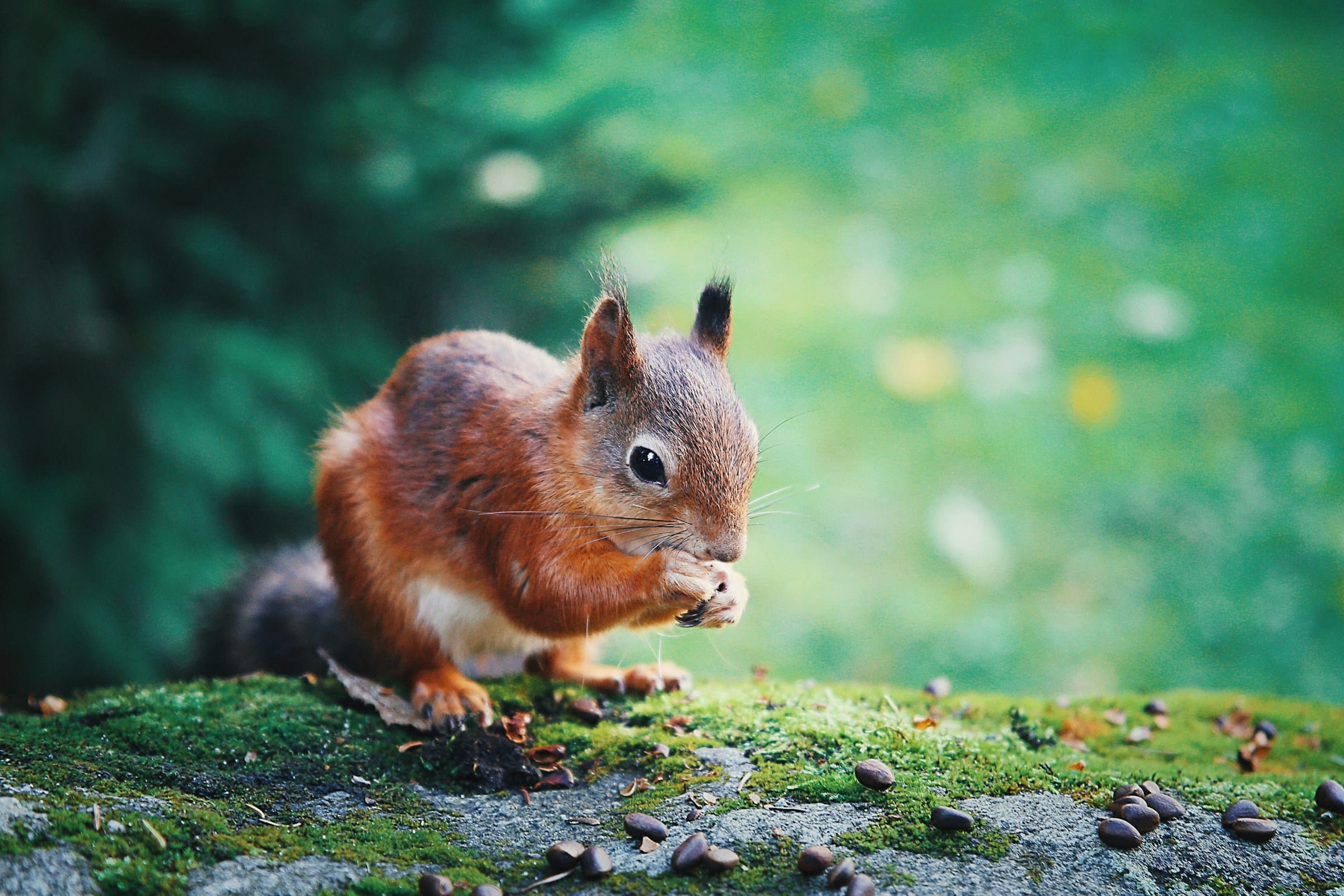What are the impacts of UK's recent forestry regulations on red squirrel conservation?

Forestry regulations in the UK have recently been updated, with significant implications for the management of red squirrel populations. You might wonder what squirrels have to do with forestry regulations. Well, the link is quite profound. The health of the UK's woodlands, trees, and forests directly influences the wellbeing of the red squirrels that inhabit these areas. This article will explore how these forestry-related changes are likely to impact red squirrel conservation in the UK.
The Status of Red Squirrels in the UK
Red squirrels, one of our beloved native species, are under siege. The introduction of their American cousins, the grey squirrels, has made survival a challenge for the reds. The greys are more robust and aggressive, competing for space and resources and carrying a virus deadly to reds. The forestry regulations are thus seen as a critical tool in red squirrel conservation.
Dans le meme genre : What specific breeding habits of UK's rare insects should enthusiasts be aware of to aid in conservation efforts?
According to a survey by Gurnell from the University of England, the red squirrel population in the UK has decreased dramatically over recent decades. The decline has been so severe that red squirrels are now classified as an endangered species in England. This situation has led to a surge in efforts aimed at preventing their extinction.
However, as you may know, the journey towards conservation is paved with numerous challenges. One of the most significant obstacles is habitat degradation, which is where the UK's recent forestry regulations come into play. These forestry regulations will shape the management of woodland areas across the UK, profoundly impacting red squirrel conservation.
A voir aussi : How can UK's agricultural sector implement more owl-friendly practices to control rodent populations?
Overview of the UK's Recent Forestry Regulations
The UK's latest forestry regulations cover multiple aspects of woodland management. They include measures to ensure the sustainable use of forests and protect biodiversity. Forestry practices like tree planting, felling, and forest planning are all addressed.
A significant aspect of the new regulations is the focus on increasing native tree species in forestry areas. This change is expected to benefit native animals, including red squirrels, which thrive best in woodlands dominated by native trees.
Another key feature of the new plan is the shift towards a landscape-scale approach to forest management. This shift makes room for the creation of larger, contiguous areas of woodland which would aid the movement and survival of red squirrel populations.
Such changes sound promising, but how exactly will they impact red squirrel conservation? Let's delve deeper into this.
Impact of Forestry Regulations on Red Squirrel Habitat
The new forestry regulations are expected to have a positive impact on red squirrels' habitat. By promoting the growth of native tree species, these regulations could significantly improve the quality of red squirrel habitats.
Red squirrels are specialists that depend heavily on native trees like Scots Pine and Norway Spruce for food and shelter. They also find it easier to move around in these native trees, making it easier for them to evade predators and grey squirrels.
Additionally, the proposed landscape-scale approach to forest management has the potential to increase the size of red squirrel habitats. Larger habitats would enhance the capacity of woodland areas to support healthy squirrel populations. This strategy is expected to buffer red squirrels from the impacts of habitat fragmentation, a significant threat to their survival.
Impact of Forestry Regulations on Red Squirrel Population Management
The forestry regulations are likely to influence red squirrel population management. Forestry practices, particularly those involving tree felling, can disrupt squirrel habitats and cause population declines. The new regulations, however, aim to minimise the impact of these practices on squirrels and other wildlife.
Moreover, the regulations encourage the adoption of measures to control grey squirrel populations in forestry areas. As previously mentioned, grey squirrels pose a significant threat to red squirrels. Controlling their numbers could help to alleviate the pressure on red squirrel populations.
Impact of Forestry Regulations on Red Squirrel Conservation Strategy
Lastly, the new forestry regulations will likely influence red squirrel conservation strategies. These strategies often involve habitat management, population control, and monitoring, all of which will be affected by the regulations.
For instance, the push for native tree planting could support habitat management efforts aimed at providing favourable conditions for red squirrels. Meanwhile, the regulations' focus on controlling grey squirrel populations aligns with the objective of reducing competition and disease transmission to red squirrels.
In terms of monitoring, the regulations require the maintenance of records related to woodland management. These records could provide valuable data for monitoring red squirrel populations, contributing to their conservation.
In conclusion, while it's early days yet, these recent changes in forestry regulations show promise for the future of red squirrel conservation in the UK. Conservationists, scientists, and forestry managers will all need to collaborate effectively to ensure these regulations deliver the desired benefits for our cherished red squirrels.
Detailed Analysis of the Forestry Regulations and Their Effects on Red Squirrel Conservation
The new laws introduced by the Forestry Commission have a significant impact on the squirrel conservation effort. One of the primary aspects of these regulations is the increased emphasis on planting native tree species, which is a crucial facet of habitat conservation for red squirrels.
Red squirrels, or Sciurus vulgaris, predominantly rely on native species such as the Scots Pine for both food and shelter. These trees are better suited for red squirrels than non-native species, enabling them to thrive and evade their grey competitors and predators with greater ease. Therefore, the new regulations' emphasis on the propagation of native tree species could be a significant boon for the squirrel population.
The shift in focus towards a landscape-scale approach to forest management is another significant change that could bolster squirrel conservation efforts. By increasing the size of continuous woodland areas, this approach could aid in reducing the fragmentation of habitats, a major issue negatively impacting red squirrel populations. Larger, more connected habitats can support larger populations of red squirrels, providing a buffer against the risks associated with habitat fragmentation.
Furthermore, the new regulations aim to manage the population of grey squirrels, which pose significant threats to red squirrels. By controlling their numbers, the pressure on red squirrel populations could be reduced, contributing positively to their conservation.
Conclusion: The Future of Red Squirrel Conservation in the UK
The recent changes in forestry regulations in the UK offer new hope for the future of red squirrel conservation. By aligning these regulations with the needs of the red squirrel populations, significant strides can be made towards ensuring their survival.
The emphasis on increasing native tree species and adopting a landscape-scale approach can significantly improve the habitat conditions for red squirrels. Furthermore, managing the grey squirrel population aligns with conservationists' objective of reducing competition and disease transmission, directly benefiting the reds.
As the impact of these regulations unfolds, continued monitoring and record maintenance can provide a wealth of data to inform conservation strategies and adjust them as necessary.
However, the successful implementation of these regulations requires ongoing collaboration between conservationists, scientists, and forestry managers. By working together, these stakeholders can ensure that the laws deliver the desired benefits for our cherished red squirrels.
In conclusion, the Forestry Commission's regulations may be new, but they undoubtedly hold the promise of a brighter future for the UK's red squirrel populations. With careful implementation and monitoring, these changes could prove to be the turning point in the fight to save the red squirrel from the brink of extinction. The survival of this beloved species, a symbol of our nation's rich biodiversity, rests on the successful application of these new and promising measures.
